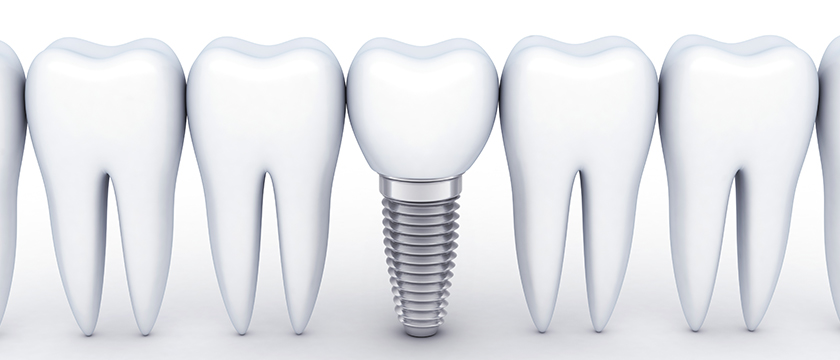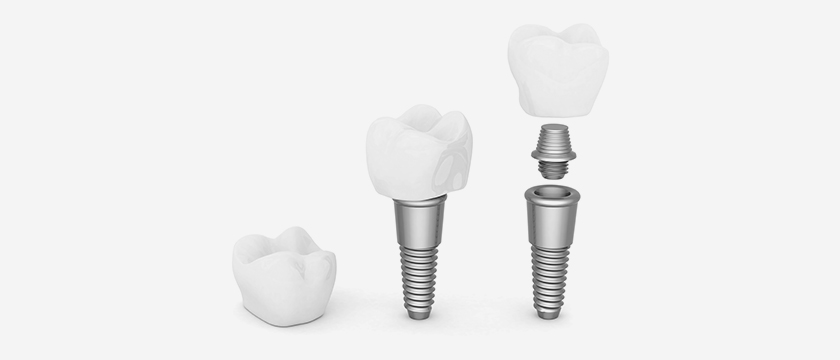Traditional Dental Implants Vs Digital Dental Implants
A traditional dental implant procedure can take a relatively long time to complete. The procedure needs to be divided up into stages, and each stage will be planned according to your own case and anticipated rate of healing. The first three to four steps involved may result in some discomfort because they require surgery. If you’re having a traditional dental implant you may follow this kind of sequence.
Bone grafting
If you do not have thick enough jaw bone, you may need a bone graft to create a solid enough anchor for your implant. To do this your dentist will take bone from another part of your body, make an incision where your extracted tooth was, and surgically embed the bone material into the incision before stitching it up again. Not everyone needs a bone graft – if you don’t, you would start with the next step.
Embedding the implant
A dental implant is an artificial tooth root that will sit below your gum line, and support a crown later on. Your dentist will make an incision into your gum in order to reach the bone under, before drilling a hole into your jaw. Then he or she will screw the dental implant into the hole before stitching the area up again. Now you will play a waiting game, where you will need to wait for your new dental implant to osseo-integrate with your jaw bone. This can take up to three months to occur.
Attaching the abutment to your implant
The abutment is an extension piece that joins your dental implant to your new crown. But, in order for it to be attached, your dentist needs to open the incision up again.
Pain After Dental Implant – How Long
It’s possible to experience some pain after each of these stages. In fact, for seven to ten days after each of these stages is completed, some degree of discomfort can be expected. You may experience some light bleeding, swelling and inflammation but these side effects should all subside in the days following your dental implant surgery.
Pain that gets worse or starts seven days after implant has been placed should be checked out by your dentist.

Why We Like Digital Implants
Digital dental implants are known as flapless surgery, and are minimally invasive. Instead of making incisions into your gums, your dentist can drill straight into your jaw bone. Not having the incision automatically reduces the amount of bleeding, swelling and pain.
When Tooth Implant Pain Is An Indicator Of Failure
When they are well planned and performed by a suitably qualified and experienced dental practitioner, dental implants have a high success rate of 95% – 98%, but it is possible for implants to fail months or even years later.
Early implant failure is usually apparent three to four months after surgery. This is the period during which your implant needs to integrate with your jaw bone.
An Infection
It is possible to develop an infection at the implant site and it is particularly more common in smokers than non-smokers. Poor oral hygiene and auto-immune diseases can also play a role in developing an infection at the implant site.
Allergic Reactions To Dental Implants
Although it is rare, some people are allergic to titanium alloys, which is the primary material used in dental implants. If this is the case, you may experience swelling in your mouth, a tingling sensation and loss of taste. If you are aware that you have an allergy, you should discuss your options with your dental practitioner.
Dental implant pain may also indicate:
Damage To Nerves Or Tissues
This can occur if your dental practitioner places your implant too close to a nerve, you may experience numbness or tingling in your face, lips, gums or tongue.
Rejection Of The Implant
Some bodies simply reject an implant because it is recognised as a foreign object. Symptoms of foreign body rejection include chills and fever, pain and swelling at the site of the implant.
Improve Your Chances Of Dental Implant Success
Always follow your dentist’s care instructions, particularly your instructions for maintaining good dental hygiene and not smoking. Remember to visit your dentist twice a year to keep your mouth cavity and pain-free.
Remember that tooth implant pain has a short lifespan and should improve with time. It should not deter you from dental implant treatment – millions of people have had the surgery and managed the pain. If you have questions or concerns about dental implant discomfort or pain, it’s time to speak to a professional:
Sydney CBD: (02) 8294 5812
Gosford: (02) 8294 8656






